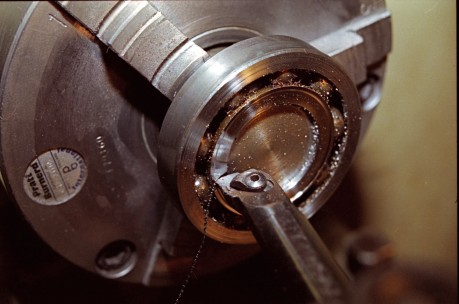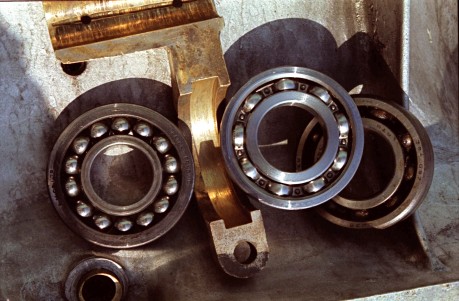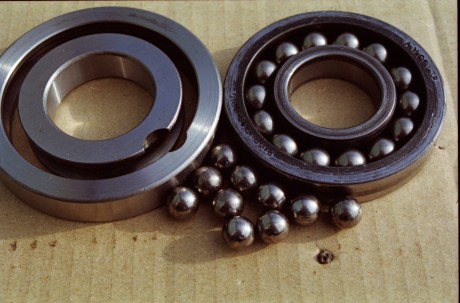The Turn of a Ball Bearing
Monday, March 1st, 2010How I turned down a new bearing to replace an obsolete one
Published in the Gazette of the Veteran Car Club of Great Britain, June 2003
A few weeks ago I decided to replace a ball bearing in my 1906 Rover’s gearbox. This bearing had been softened when someone tried to repair the housing with the bearing in situ. I knew that these were of a rather narrow, light type, but I have used similar bearings in the past. I have over 40 years of engineering, kept any bearing that might still give service. The trouble is that many of these are nearly as old as the Rover, or are one-offs, or are small production numbers that were almost obsolete before being used (try getting wheel bearings for some 1960’s cars!)
Having read Kent Robinson’s article on the first Rovers (Gazette, April 2002) I feared that obtaining a suitable replacement would prove difficult, nonetheless I thought it would be quicker to phone the bearing stockist rather than rummage through my archives. The bearing was 30 x 72 x 13, and the 72 x 13 dimensions could not be altered without causing serious problems. I was told that the nearest to my bearing was 7mm wider, not even near it, and, with and order of only one, there was, I felt, a lack of enthusiasm on their part to look any further. Unfortunately, we have lost several bearing firms of long standing lately, and one of these taught me a lot about bearings that would not be obvious. They would always try to find several alternative bearings that I could pick from.
Oh well, try again! Before long I had found in my archives several bearings of the size that the bearing stockist had suggested. It was easy to see that I could not remove 6mm from the 19mm width, but I could also see that this bearing was of the medium duty type, that is with a reasonably small bore, a large outside diameter and a large width. Sixty years ago you might find extra light, narrow light, narrow medium, medium and heavy bearings (see table).
| Narrow Light | Narrow medium | Light | Medium | Heavy |
| 30 x 62 x 10 | 30 x 72 x 13 | 35 x 72 x 17 | 30 x 72 x 19 | 20 x 72 x 19 |
| 35 x 70 x 10 | (Actual Rover bearing size) | (Size of bearing I used) | ||
| 40 x 80 x 11 |
Some Single Row Rigid Bearing sizes, taken from a 1950s calalogue
All that is commonly available today are light medium and heavy. They are also, of course, specials made by manufacturers for themselves. These have very rarely come near to the old sizes I have needed. There is also the possibility of getting one made, I have made simple cone and cup bearings but the extra accuracy needed to make a single row rigid ball bearing is considerable and it may be necessary to make four or five bearings in order to get one just right, as there is always a failure rate.
No, I did not want all that work! I always prefer to modify a new part that will be readily available in the future. Modifying my bearing housing was not an option: it was already a weak design and had already been broken. At last I found a lighter bearing in my archives that was 2mm narrower, but still 4mm too wideand the bore size had gone from 30 to 35mm. The bore could be easily bushed, so I decided to turn 4mm off the width. This bearing turned out to be still available: there was nothing to lose if it didn’t work.
Fortunately it did work and was still a much stronger construction than the old Rover bearing. My advice to anyone who is told that a bearing is not available is to obtain an up-to-date catalogue and check what close matches can be found, cross-referencing imperial and metric sizes. It is always possible to remove a small amount from both internal and external surfaces.
Another useful tip is that an uncaged bearing can be reclaimed if the bearing race is still sound.



Great post! I bet you put a lot of research into it.